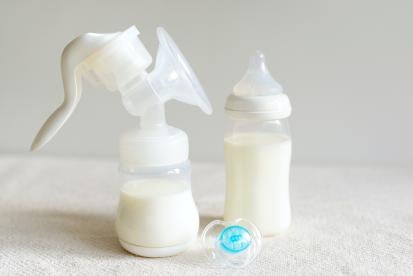The U.S. Department of Labor Wage and Hour Division (WHD) has published guidance for agency officials responsible for enforcing the “pump at work” provisions of the Fair Labor Standards Act (FLSA), including those enacted under the 2022 Providing Urgent Maternal Protections for Nursing Mothers Act (PUMP Act).
The PUMP Act was adopted along with the Pregnant Workers Fairness Act when President Joe Biden signed the Consolidated Appropriations Act, 2023 in December 2022.
Although Field Assistance Bulletin No. 2023-02 is directed at agency officials, it provides employers a glimpse into how the WHD understands and will enforce the rights available to most employees under the FLSA for reasonable break time and a place to express breast milk at work for a year after a child’s birth.
Highlights
-
Frequency and Duration of Breaks. The WHD emphasizes that employees are entitled to breaks every time they need to pump and the length and frequency of breaks will vary by employee. Employers and employees may agree to a certain schedule based on the employee’s need to pump, but the WHD advises that employers cannot require employees to comply with a fixed schedule. The WHD also reminds employers that an employee’s needs and break schedule may require adjustment over time.
-
Compensation. Time for pump breaks may be unpaid, unless otherwise required by federal, state, or local law. Employers should pay careful attention to the FLSA’s standard requirements for counting and compensating hours worked. Employees must be paid for any time spent pumping when they are not fully relieved from duty or when pumping during an otherwise paid break.
-
Privacy Requirements. The FLSA requires that employees have access to a place to pump at work that is (1) shielded from view, (2) free from intrusion from coworkers and the public, (3) available each time it is needed by the employee, and (4) not a bathroom. To ensure privacy, the WHD advises an employer could display a sign when the space is in use or install a lock on the door. Teleworking employees must also be free from observation from a computer camera or other similar device while pumping.
-
Functional Space Requirements. The WHD advises that the location must be “functional” for pumping:
A space must contain a place for the nursing employee to sit, and a flat surface, other than the floor, on which to place the pump. Employees must be able to safely store milk while at work, such as in an insulated food container, personal cooler, or refrigerator. Ideally, spaces to pump breast milk should also include access to electricity, allowing a nursing employee to plug in an electric pump rather than use a pump with battery power, which may require more time for pumping. Access to sinks near to the space provided to pump so that an employee can wash their hands and clean pump attachments also improves the functionality of the space and may reduce the amount of time needed by nursing employees to pump breast milk at work.
-
Small Employer Exemption. In limited circumstances, employers with fewer than 50 employees nationwide may be exempt from the pump-time requirements if they can demonstrate that compliance for a particular employee would cause an undue hardship. The burden of proving undue hardship is on the employer. According to the guidance, “To assert the exemption, an employer must be able to demonstrate that the employee’s specific needs for pumping at work is an undue hardship due to the difficulty or expense of compliance in light of the size, financial resources, nature, and structure of the employer’s business.”
-
Anti-Retaliation Provisions. Like most employment laws, the FLSA prohibits retaliation against anyone who has engaged in protected activity, including requesting break time or space to pump or requesting payment of wages. As an example, the WHD states that employers cannot hold time the employee took for pump breaks against them for quotas or require employees to work additional hours to make up for the time missed due to pump breaks.
-
Poster. Employers should post the WHD’s updated FLSA poster.
The WHD also provides additional resources for employers on its Pump at Work webpage.
***
In addition, employers should review and comply with relevant state and local wage and hour laws and lactation accommodation laws.






 i
i


